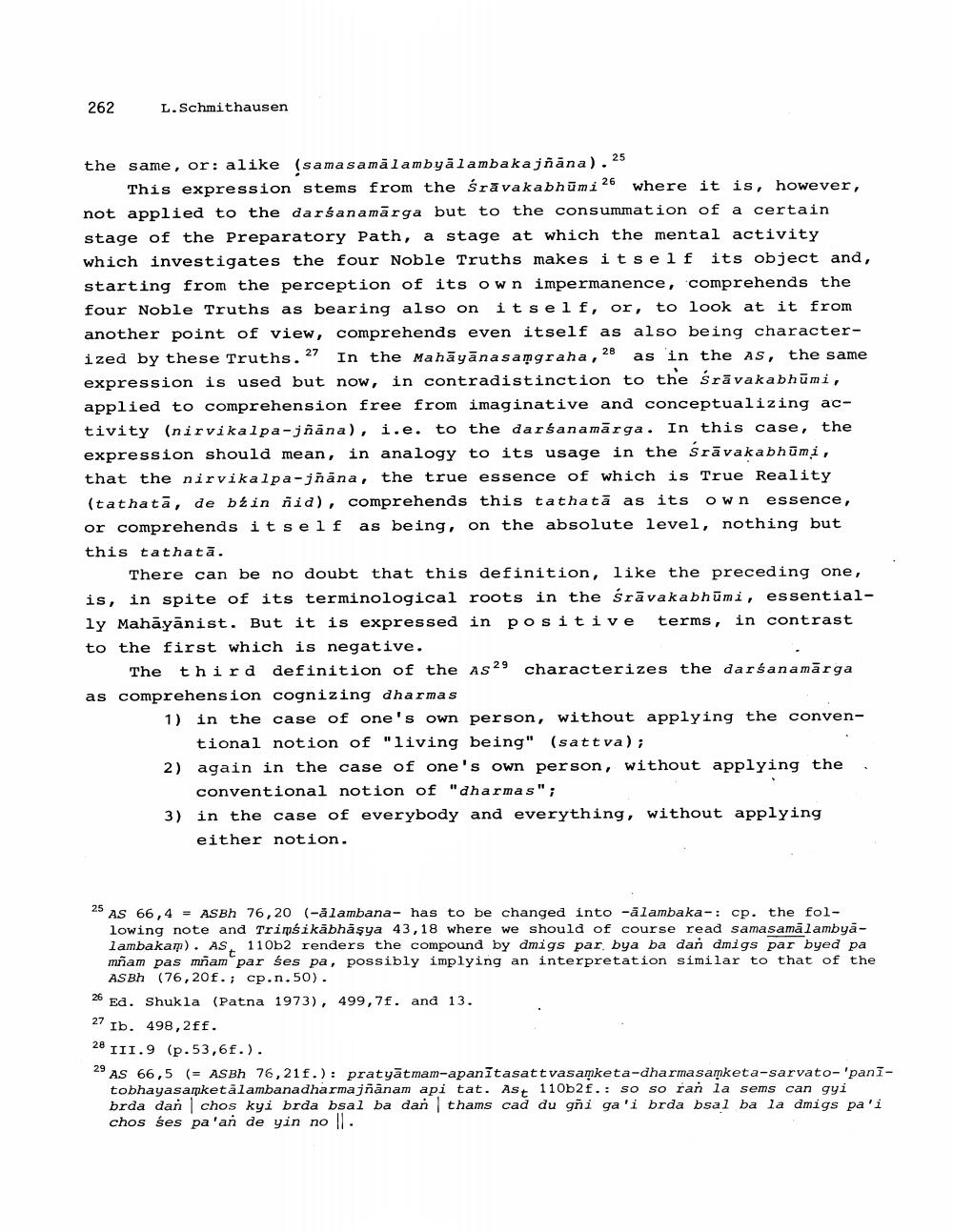________________
262
L. Schmithausen
the same, or: alike (sama samalambyālambakajñana). 25
This expression stems from the śrăvakabhūmi 26 where it is, however, not applied to the darśanamārga but to the consummation of a certain stage of the Preparatory Path, a stage at which the mental activity which investigates the four Noble Truths makes itself its object and, starting from the perception of its own impermanence, comprehends the four Noble Truths as bearing also on itself, or, to look at it from another point of view, comprehends even itself as also being characterized by these Truths. 27 In the Mahāyānasaņgraha, 28 as in the as, the same expression is used but now, in contradistinction to the śrāvakabhūmi, applied to comprehension free from imaginative and conceptualizing activity (nirvikalpa-jñāna), i.e. to the darśanamārga. In this case, the expression should mean, in analogy to its usage in the Srāvaka bhūmi, that the nirvikalpa- jñana, the true essence of which is True Reality (tathata, de bin nid), comprehends this tathatā as its own essence, or comprehends itself as being, on the absolute level, nothing but this tathatā.
There can be no doubt that this definition, like the preceding one, is, in spite of its terminological roots in the śrā vakabhūmi, essentially Mahāyānist. But it is expressed in positive terms, in contrast to the first which is negative.
The third definition of the As 29 characterizes the darśanamārga as comprehension cognizing dharmas
1) in the case of one's own person, without applying the conven
tional notion of "living being" (sattva); 2) again in the case of one's own person, without applying the
conventional notion of "dharmas"; 3) in the case of everybody and everything, without applying
either notion.
25 AS 66,4 - ASBH 76,20 (-ålambana- has to be changed into -ālambaka- : cp. the fol
lowing note and Trimśikābhāşya 43,18 where we should of course read samasamalambyalambakam). AS 110b2 renders the compound by dmigs par bya ba dan dmigs par byed pa mnam pas mñam par ses pa, possibly implying an interpretation similar to that of the
ASBh (76,20f.; cp.n.50). 26 Ed. Shukla (Patna 1973), 499,7f. and 13. 27 Ib. 498,2 ff. 28 III.9 (p.53,6f.). 29 AS 66,5 (= ASBH 76,21f.): pratyātmam-apanītasattvasamketa-dharmasamketa-sarvato-'pani
tobhayasarketālambanadharma jnanam api tat. Ast 110b2f.: so so ran la sems can gyi brda dan chos kyi brda bsal ba dan thams cad du gñi ga'i brda bsal ba la dmigs pa'i chos śes pa'an de yin no ll.




